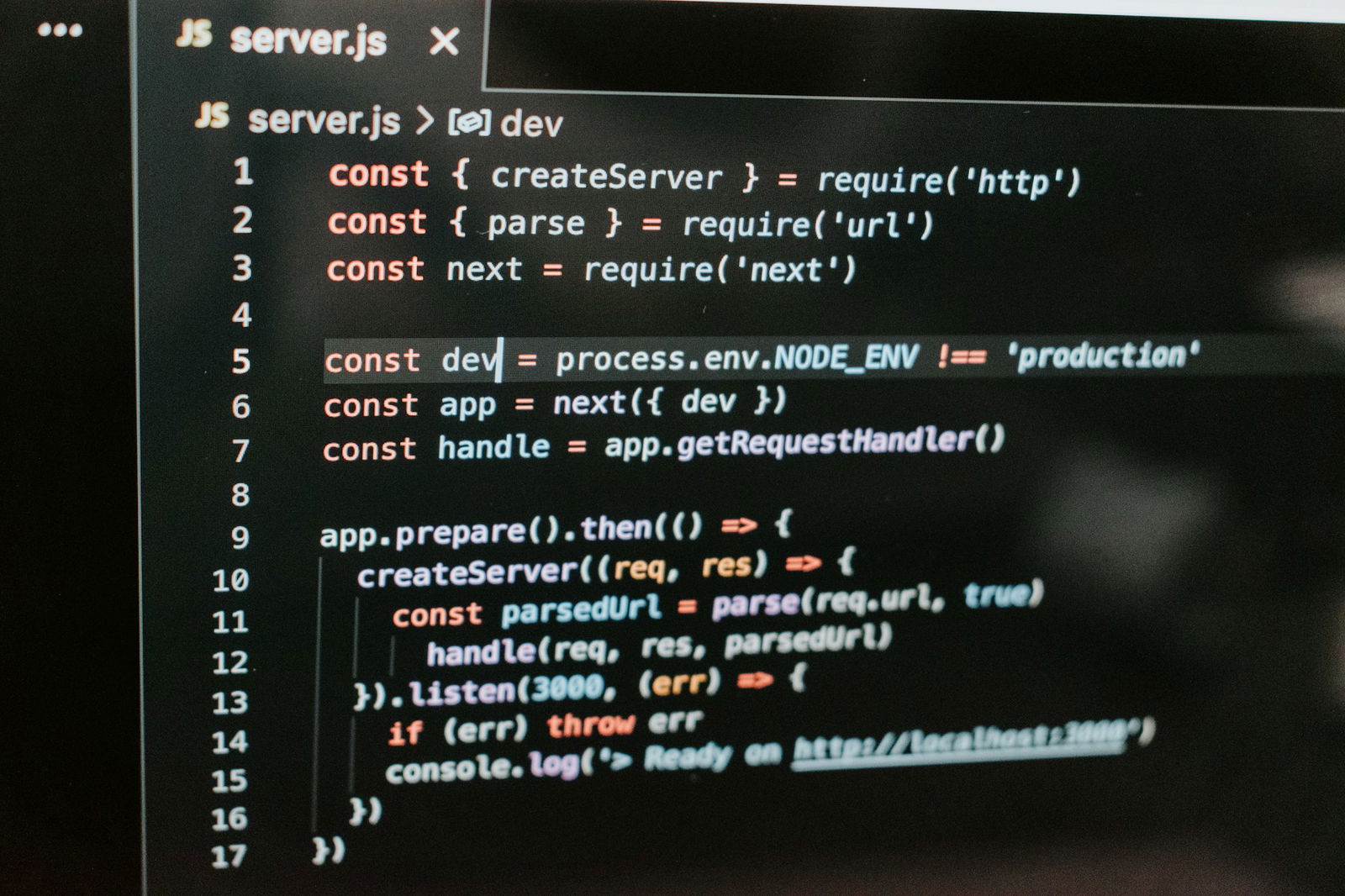Are you looking to enhance your UI frameworks? NextJS, a React framework that can streamline your development process. This article will help you understand how NextJS can elevate your projects, from faster rendering to better SEO.
Magic UI's React component library adds the finishing touch to boost your NextJS projects. Ready to improve your skills and make the most of your UI Frameworks? Let's get started!
What Is NextJS?

NextJS is an open-source web development framework that empowers React-based web applications with server-side rendering and static website generation. React documentation recommends NextJS among the recommended toolchains, suggesting it to developers when building a server-rendered website with Node.js.
Unlike traditional React apps that can solely render their content in the client-side browser, NextJS extends this functionality to applications rendered on the server side. This dynamic framework is copyrighted and trademarked by Vercel, the private company that created it, and continues to lead its open-source development.
Powerful Framework for Building SEO-Friendly Apps
NextJS is renowned for its robust capabilities, including server-side rendering (SSR) and enhanced search engine optimization (SEO). NextJS offers built-in routing, simplifying the creation of dynamic routes and navigation handling within your application. With the increased emphasis on performance and SEO in modern web development, leveraging a framework like NextJS can offer a significant advantage in building high-performing, SEO-friendly web applications.
Streamlined Development and Enhanced Performance
You have access to its versatile features that streamline the development process and enhance the performance of web applications. Its server-side rendering capabilities can lead to faster loading times and improved SEO, resulting in better search engine rankings and increased visibility. The built-in routing functionality simplifies your application's navigation structure, making it easier for users to navigate through pages seamlessly.
The Go-To Choice for High-Performance
NextJS provides a robust foundation for developing high-performance web applications with enhanced SEO, faster load times, and improved user experience. With its server-side rendering capabilities and built-in routing, NextJS is a go-to choice for developers looking to create dynamic and search engine-friendly web applications.
NextJS Styling And Features

NextJS supports styling with:
- CSS
- Precompiled Scss and Sass
- CSS-in-JS
- Styled JSX
- TypeScript support
- Smart bundling
- Open-source transpilers such as SWC
TurboPack bundles modules after transformation; all these tools are used with npm in a terminal.
Server-Side Rendering for Performance and Security
The main highlight of NextJS is its server-side rendering feature that lessens the burden on web browsers and enhances security. Server-side rendering can be implemented for any part of the application or the entire system, allowing content-rich pages to be singled out for server-side rendering.
It can be applied only for first-time visitors to lessen the load on web browsers that have not downloaded any site assets yet. The hot reloading feature detects code changes and re-renders appropriate pages, avoiding the need to restart the server.
Development with Routing, Hot Reloading, and More
NextJS utilizes page-based routing for developer convenience and supports dynamic routing. Other notable features include hot-module replacement for live module replacement, automatic code splitting that includes only necessary code for page loading, and page prefetching to reduce load time.
It also supports incremental static regeneration and static site generation. During build time, a pre-built version of the website is usually saved as a .next folder consisting of static HTML pages cached and sent to users when requested.
NextJS provides numerous features such as:
- Server-side rendering
- Hot reloading
- Automatic code splitting
- Page prefetching
Free Animated React Components for Effortless UI Design
MagicUI is a free and open-source UI library that we designed specifically for design engineers. It offers a collection of over 20 animated components built with React, TypeScript, Tailwind CSS, and Framer Motion. We provide a range of visually appealing and interactive elements that can be easily integrated into web applications, allowing us to create stunning user interfaces with minimal effort.
MagicUI components are highly customizable, enabling seamless adaptation to match our desired branding and design requirements. With our focus on animation and a design-centric approach, MagicUI aims to bridge the gap between design and development, empowering us to craft captivating digital experiences. Along with our free component library, with MagicUI Pro, you can save thousands of hours create a beautiful landing page, and convert your visitors into customers with our website templates.
Use our React component library for free today at https://magicui.design/docs.
Related Reading
- React Frameworks
- What Are UI Components
- What Is A Component Library
- React Libraries
- React CSS Framework
- React Design Patterns
- Component Libraries
- React Best Practices
Benefits Of Using NextJS

1. Rich Ecosystem
NextJS benefits from the wide adoption of JavaScript and strong support from industry giants like Vercel and Meta. It offers a rich talent pool and ease of learning. With a vast community of developers and various resources available, NextJS has a solid foundation. The wide adoption of JavaScript as a primary language for web development contributes to the wide acceptance and implementation of NextJS.
Industry leaders like Vercel and Meta strongly support the framework, ensuring its relevance and longevity in the constantly evolving tech landscape. This rich ecosystem translates into a pool of skilled developers and extensive learning resources, making it easier for businesses to adopt and scale with NextJS.
2. Future-Proof Technology
With regular updates and support from the community and industry leaders, NextJS represents a future-proof solution in web development. Its alignment with the latest web standards makes it a strategic asset for long-term business goals and technology roadmaps. Continuous updates and enhancements ensure that NextJS stays relevant and competitive in the fast-paced tech industry.
This commitment to ongoing development results in a robust framework that can adapt to changing requirements and advancements in the field. By staying aligned with the latest web standards, NextJS ensures that businesses can build applications that are sustainable and compatible with evolving technologies, making it a safe long-term investment for any organization.
3. Easy Scalability
NextJS supports scalability through features like automatic code splitting, flexible rendering options, and optimized image handling. These features ensure efficient resource utilization and performance under high traffic. Scalability is a critical consideration for any web application, especially as it grows in popularity and user base. NextJS addresses this need by providing features that help manage and optimize resources.
Automatic code splitting allows the framework to handle large codebases efficiently, reducing load times and improving overall performance. Flexible rendering options enable developers to adapt the application to varying traffic levels, ensuring a smooth user experience under high loads. Optimized image handling further enhances performance by reducing load times and bandwidth usage, making NextJS a reliable choice for scalable applications.
4. High Security
Offering a wide range of tools for building secure web applications, NextJS addresses critical areas like authentication and data validation. It is crucial for maintaining user trust and data integrity in the face of growing cyber threats. Security is a top priority for any web application, and NextJS offers a comprehensive set of tools to help developers build secure applications.
Features like built-in support for authentication and data validation simplify the implementation of security measures, reducing the risk of vulnerabilities. By providing robust security features, NextJS ensures that businesses can protect user data and maintain the trust of their customers, safeguarding their reputation and compliance with data protection regulations.
5. Performance Optimization
Key features like lazy loading, image optimization, code splitting, and route prefetching in NextJS positively influence site performance. Performance is a crucial aspect of user experience, and NextJS offers a range of features to optimize site speed and responsiveness. Lazy loading enables the framework to load assets on demand, improving load times and reducing bandwidth usage. Image optimization ensures that images are delivered in the most efficient format and size, reducing load times.
Code splitting breaks down the application into smaller chunks, reducing load times and improving resource management. Route prefetching anticipates user interaction, preloading resources in advance, and enhancing the overall browsing experience. These performance optimization features make NextJS an excellent choice for applications where speed and responsiveness are critical.
How Does NextJS Compare To Other Frameworks?

Comparing NextJS to other frameworks, its unique value proposition becomes more clear. Unlike traditional React applications that require additional configurations for tooling and functionalities, NextJS comes out of the box with features like server-side rendering and static site generation.
Beyond React
While React is excellent for building user interfaces, it doesn't provide solutions for other aspects of application development. This means developers often have to spend considerable time configuring tools and solving common application requirements. With NextJS, these challenges are addressed head-on as it extends React's capabilities by providing a structured framework with pre-configured functionalities.
Server-Side Rendering and Static Generation
Unlike many JavaScript frameworks, which focus solely on client-side rendering—a method that can lead to performance issues and poor SEO outcomes—NextJS leverages server-side rendering and static site generation. These features make websites built with NextJS performant and SEO-friendly right from the get-go.
Related Reading
- Best React Native UI Library
- React Component Best Practices
- Tailwind Vs Bootstrap
- Material UI Alternatives
- Best React Component Library
- React Tips
- Create React Component Library
- Cool React Components
- Component Library Examples
- Bootstrap Vs React
- React Native Libraries
- Best React UI Framework
- Next.JS
- Next JS
- React Bootstrap
- MUI Table
- MUI Card
- MUI Box
Common Use Cases For NextJS

NextJS is a versatile framework that addresses diverse web development needs across multiple industries. One of its popular applications is e-commerce. Its fast rendering and robust SEO capabilities offer an optimal solution for businesses looking to create high-performance online stores that rank well on search engines.
Blogs and Marketing Websites Optimized with NextJS
Blogs and marketing websites also often leverage the power of NextJS. Its server-side rendering and static site generation features allow for rapid content changes, making it ideal for publishing platforms that frequently update their content.
Real-time Updates for News Apps and Documentation Websites
News apps and documentation websites benefit from NextJS's ability to efficiently handle real-time updates. Similarly, entertainment platforms and community-driven web apps can utilize their capabilities to offer high-performance interactive user experiences.
Enhanced Digital Experiences with NextJS
Booking apps, auction sites, information hubs—NextJS can enhance all these digital experiences due to its speed, versatility, and scalability.
Drawbacks Of NextJS

1. Development and Maintenance Costs
Flexibility often comes at a price, and in the case of NextJS, that price is development and maintenance expenses. Making changes and ensuring the application's upkeep requires a dedicated NextJS developer and front-end expert, ultimately resulting in higher costs than simpler frameworks.
2. Lack of Built-In State Manager
If your project requires state management, you must install and configure a separate solution, similar to how you would with a vanilla React application.
3. Low on Plugins
When using NextJS, you might lack access to many easy-to-adapt plugins that could streamline your development process. This can lead to more manual work and customization to achieve the desired functionality.
Related Reading
- Chakra UI Vs Material UI
- React Animation Libraries
- Ant Design Vs Material UI
- Mantine Vs Chakra
- Free React Components
- Semantic UI Vs Material UI
- React UX
- Material UI Vs Joy UI
- Ant Design Alternatives
- Material UI React
- MUI React
Check Out Our React Component Library for Design Engineers
MagicUI is a free and open-source UI library designed specifically for design engineers. This innovative library offers a collection of over 20 animated components built with React, TypeScript, Tailwind CSS, and Framer Motion. These components are visually appealing and interactive, making them perfect for creating stunning user interfaces with minimal effort.
Effortless Design Customization
The beauty of MagicUI lies in its high level of customization, with components that seamlessly adapt to your desired branding and design requirements. By focusing on animation and a design-centric approach, MagicUI aims to bridge the gap between design and development, empowering users to craft captivating digital experiences effortlessly.
MagicUI's Free Component Library
MagicUI's free component library enables users to access many visually appealing and interactive elements that can be easily integrated into web applications. With MagicUI's free component library, you can save valuable time and effort by creating beautiful landing pages that convert visitors into customers.
MagicUI Pro
With MagicUI Pro, users can take their UI design capabilities to the next level by leveraging website templates to create captivating user interfaces. MagicUI Pro can help design engineers easily create visually stunning websites, giving them the power to capture their audience's attention and convert visitors into customers.
Empowering Design Engineers to Craft Captivating UIs
MagicUI is a game-changer in UI frameworks, offering design engineers a powerful tool to effortlessly create visually appealing and interactive user interfaces. Whether you are a beginner or an experienced design engineer, MagicUI can help you take your UI design capabilities to the next level.
Don't miss the opportunity to embark on your UI design journey with MagicUI today—visit https://magicui.design/docs to use our React component library for free!
